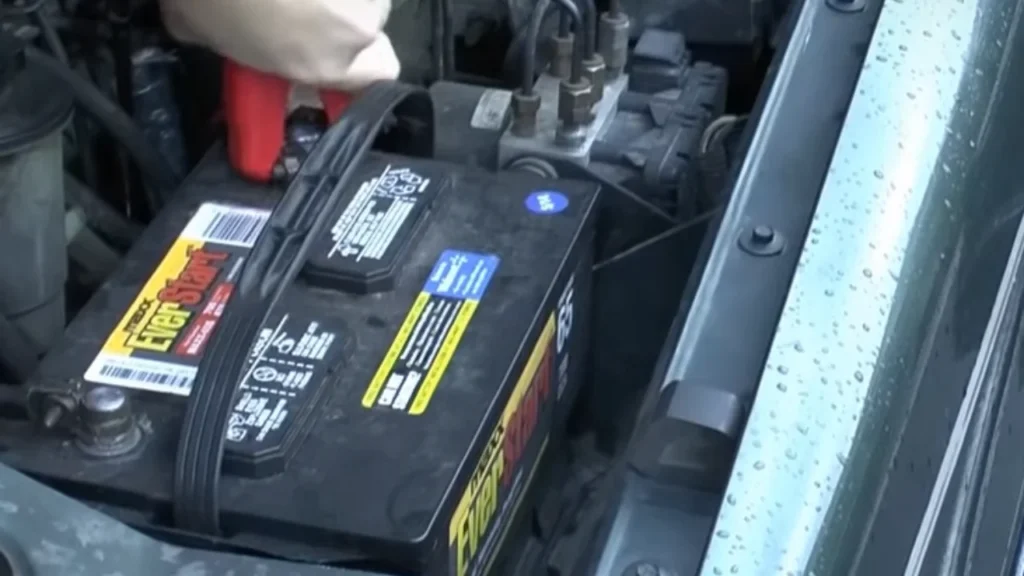Can you charge a jump starter with a battery charger? The short answer is yes, but there’s more to the story. I’ve been in situations where my jump starter saved the day, and understanding how to charge it properly can make a big difference in its lifespan. Need to charge your portable jump starter properly? Learn the best methods in our guide on how to charge a portable jump starter.

Whether you’re dealing with 800 or 1,500 amps, knowing how to recharge this device can keep you prepared for emergencies. Most jump starters have internal batteries designed for quick energy bursts, and they typically hold a charge anywhere between 3 to 6 months.
Quick Look:
Yes, you can charge a jump starter with a battery charger, but it’s important to ensure the voltage and amperage match. Using a 12-volt charger at 1-2 amps works best for most models, ensuring a slow, steady charge. While charging, always monitor the process to prevent overcharging, which can damage the jump starter’s internal battery and reduce its lifespan. To learn more about what is considered a good power for a jump starter, check out this guide.
The Role of Battery Chargers in Powering Your Devices
Let’s dive into what a battery charger actually does. Unlike a jump starter that gives your car an immediate power boost, a battery charger slowly restores power over time. In fact, it can take between 10 to 24 hours to fully charge a dead battery, depending on the charger’s strength.

How Do Battery Chargers Work?
Most battery chargers operate on 12 volts, which is the standard for most car batteries. Some advanced models even offer multiple voltage settings to accommodate different types of batteries. If you’re buying one, I recommend looking for a charger with a trickle charge feature to prevent overcharging.
Long-Term Maintenance with Battery Chargers
Battery chargers are perfect for keeping your battery healthy over time. For instance, if you don’t drive your car often, a trickle charger can maintain the battery charge, especially in colder climates where batteries tend to drain faster. While jump starters are handy in emergencies, battery chargers act as long-term battery health managers.
Looking for a multi-purpose tool? Check out our top picks for the best portable tire inflator and jump starter.
Can I Charge a Jump Starter with a Battery Charger?

Yes, you absolutely can charge a jump starter with a battery charger, but it’s essential to get the details right. Not all jump starters will accept charging this way. Before you start, double-check your jump starter’s manual for compatibility. If you’re wondering whether you can jump a car with a bad starter, check out this guide.
Most jump starters run on 12 volts, so using a charger that matches this voltage is key. I know it seems obvious, but it’s a critical step to avoid damaging your device.
Check the Voltage and Amperage
The next thing to look at is the amperage. Jump starters don’t need high amps to recharge. A charger with a lower output, like 1 to 3 amps, is ideal for safe charging. This allows for a slow and steady charge, which is far better for the jump starter’s internal battery. Trust me, charging with a higher amperage could overheat the battery or even fry the internal components!
Charging Time and Battery Capacity
Now, if you’re wondering how long this process might take, it depends on your jump starter’s battery capacity. For a typical jump starter with around 10,000 mAh, charging with a 2-amp charger could take anywhere from 4 to 6 hours. If your battery charger has an indicator light, watch it closely. When the light turns green, you’re good to go!
Unsure about how long to keep cars connected when jump-starting? Find the right timing in our article on how long to leave cars connected when jump-starting.

Jump Starters Are Designed for Short Bursts
But remember, jump starters are built for short bursts of power, not continuous charging like a car battery. So, while you can use a battery charger to charge it, always keep an eye on the progress.
You don’t want to leave it plugged in too long, as that could reduce its lifespan. Most modern chargers have automatic shutoff features, but it’s better to stay cautious and monitor it.
Ideal for Home Use
In case you’re wondering, using a battery charger on your jump starter could be a great option when you’re at home and not in a rush. Just ensure everything is compatible. The phrase “can I charge a jump starter with a battery charger” is a common query, and the short answer is yes, but with the right precautions. Are you driving an EV and need a reliable jump starter? Discover the best jump starter for EVs that will get you back on the road quickly.
Step-by-Step Guide to Charging a Jump Starter with a Battery Charger

Here’s a simple guide to charging your jump starter using a battery charger. I’ll walk you through each step, from checking compatibility to testing the final charge, ensuring the process is safe and efficient. Let’s get started with these easy-to-follow instructions!
Step 1: Confirm Compatibility
First things first, check if your battery charger is compatible with your jump starter. Most jump starters require 12 volts, so ensure your charger matches that. A mismatch in voltage can damage the jump starter, which isn’t something you want!
Step 2: Turn Off Both Devices
Before you begin, make sure both the jump starter and the battery charger are turned off. This ensures you’re safe from any potential sparks or electrical mishaps. Always start with safety as your top priority.
Step 3: Connect the Positive and Negative Clamps
Now, connect the positive (red) clamp of the charger to the jump starter’s positive terminal. Then, connect the negative (black) clamp to the negative terminal. Remember, always attach the positive first for added safety.
Step 4: Set the Charger to Low Amperage
Set your battery charger to a low amperage, ideally 1 to 2 amps, to prevent overheating. A trickle charge works best here, ensuring a slow, steady charge that extends battery life. If you have a smart charger, it will adjust automatically.
Step 5: Turn On the Charger and Monitor the Charge
Turn on the charger and keep an eye on the charging indicator. Depending on your jump starter’s capacity, it may take anywhere from 4 to 8 hours to charge. For example, a 10,000mAh jump starter typically takes about 5 hours to fully charge.
Step 6: Turn Off and Disconnect Safely
Once the jump starter is fully charged, turn off the charger first. Then, remove the negative (black) clamp, followed by the positive (red) clamp. This order ensures you avoid any sparks or electrical issues during disconnection.
Step 7: Test the Jump Starter
Finally, test the jump starter to ensure it’s holding the charge. You can use a multimeter to check the voltage or try jump-starting a small device. This step gives you confidence that the jump starter is ready for emergencies.
Safety Considerations
Let’s dive into the safety aspect because, honestly, safety should be our top priority. Charging a jump starter might sound simple, but there are risks if not done right. For instance, overcharging can reduce your battery’s life by as much as 30%! No one wants that, right?
- Prioritize Safety First
- Monitor the Charging Process
- Proper Clamp Handling
- Keep an Eye on Indicators
- Follow the Manufacturer’s Guidelines
Do’s and Don’ts to follow:
Do’s:
- Check voltage and amperage compatibility.
- Monitor temperature during charging.
- Use a well-ventilated space.
- Connect clamps in the correct order.
- Follow the manufacturer’s safety instructions.
Don’ts:
- Don’t leave the charger unattended.
- Don’t overcharge the jump starter.
- Don’t use near-flammable materials.
- Don’t touch the clamps together.
- Don’t charge a damaged battery.
Alternative Ways to Charge a Jump Starter
If you’re wondering about other ways to charge your jump starter, I’ve got you covered! The easiest and most common method is using a USB or wall adapter. Most modern jump starters come with a built-in USB port that makes this super convenient.
Charging via USB or Wall Adapter
If you’re wondering about other ways to charge your jump starter, I’ve got you covered! The easiest and most common method is using a USB or wall adapter. Most modern jump starters come with a built-in USB port that makes this super convenient.
Using the Vehicle’s 12V Port
For those long road trips, charging through your vehicle’s 12V port is a fantastic option. A 12V adapter usually takes 3-5 hours to fully charge your jump starter, depending on the model and battery size. It’s perfect if you’re constantly on the go. Have a Mini Cooper? Learn the specific steps for how to jump-start a Mini Cooper to get it running smoothly.
Solar Charging
If you’re environmentally conscious, you can even use solar charging. While it takes longer (up to 48 hours, depending on sunlight), it’s an eco-friendly option. Solar charging is great if you live in sunny areas and don’t need a quick power boost.
Can You Charge a Jump Starter with a Battery Charger?
Now, if you’re asking, “Can I charge a jump starter with a battery charger?” — yes, but make sure the voltage and amperage match. However, these alternatives offer flexibility, especially in emergencies. Using these methods can give you a reliable and portable power source in various situations.
Wrap-Up:
If you’re asking, “Can I charge a jump starter with a battery charger?”, the answer is yes, but it requires careful attention. Matching the correct voltage and amperage is essential to ensure safe and effective charging.
From my experience, using a battery charger at home can be very convenient, but it’s crucial to monitor the process to prevent overcharging. Whether you’re working with a 10,000 mAh jump starter or a larger model, careful charging helps extend its lifespan and keeps you prepared for emergencies.




